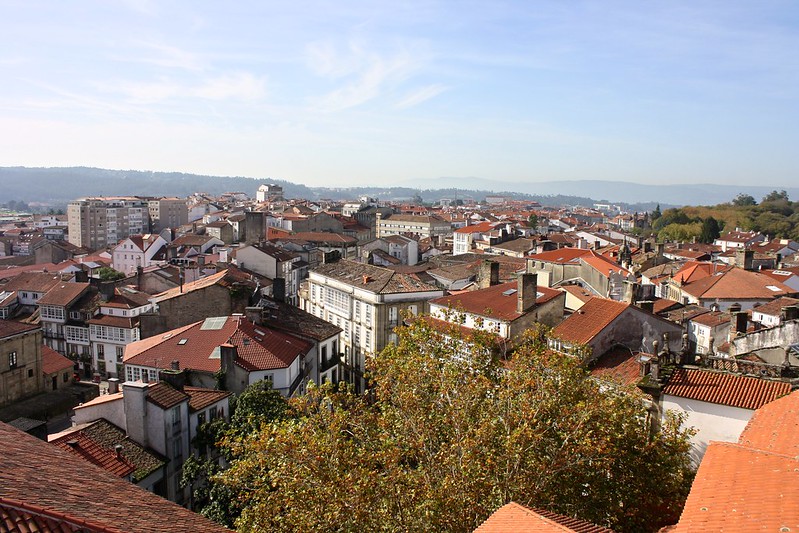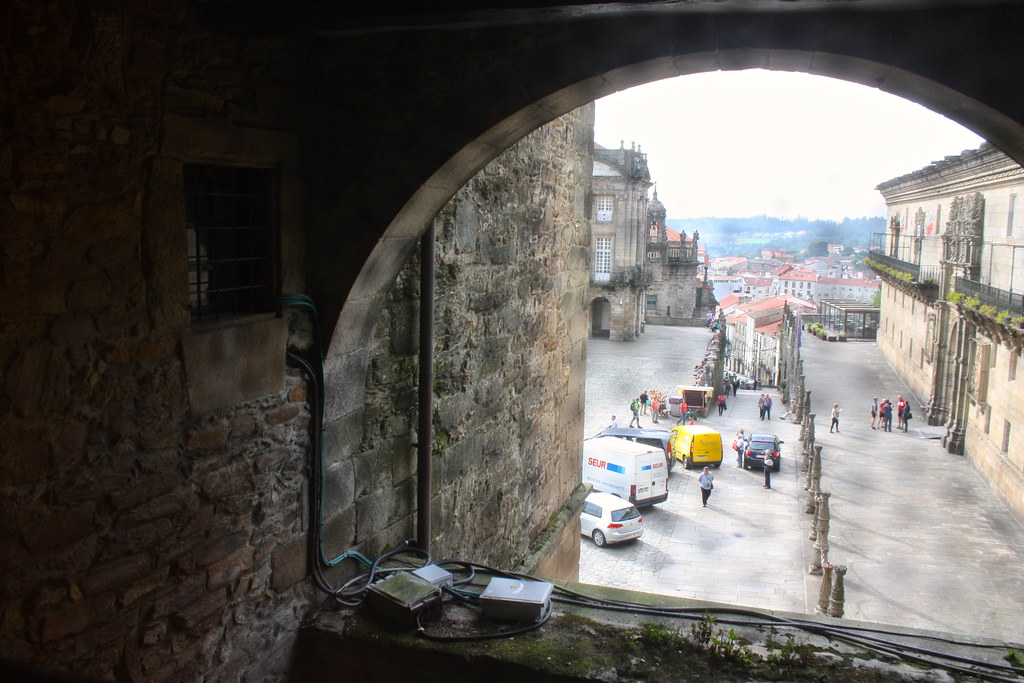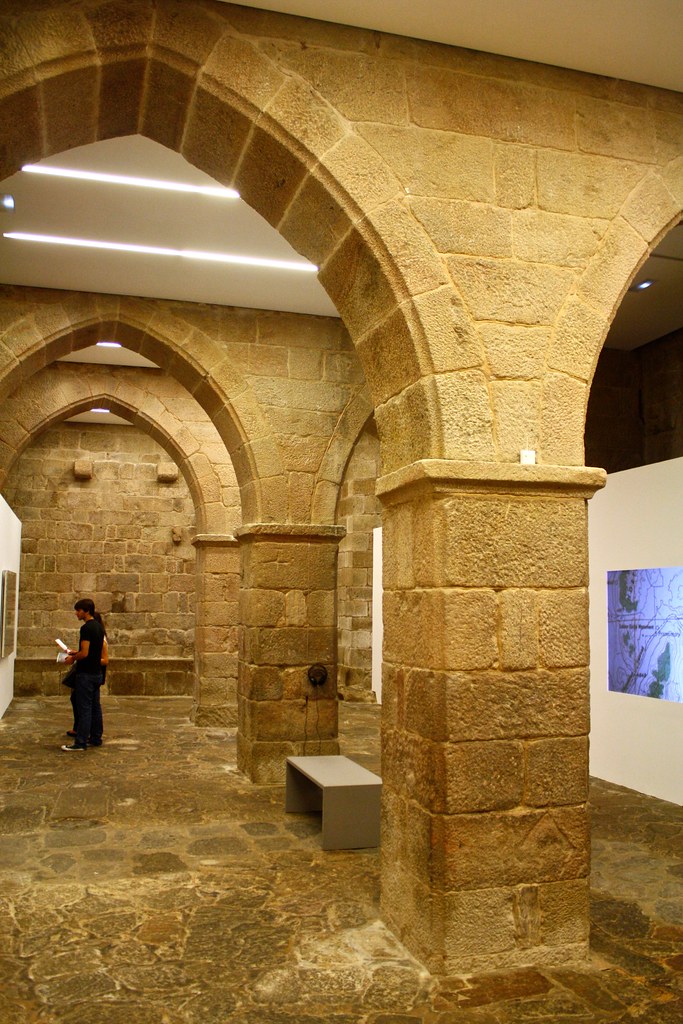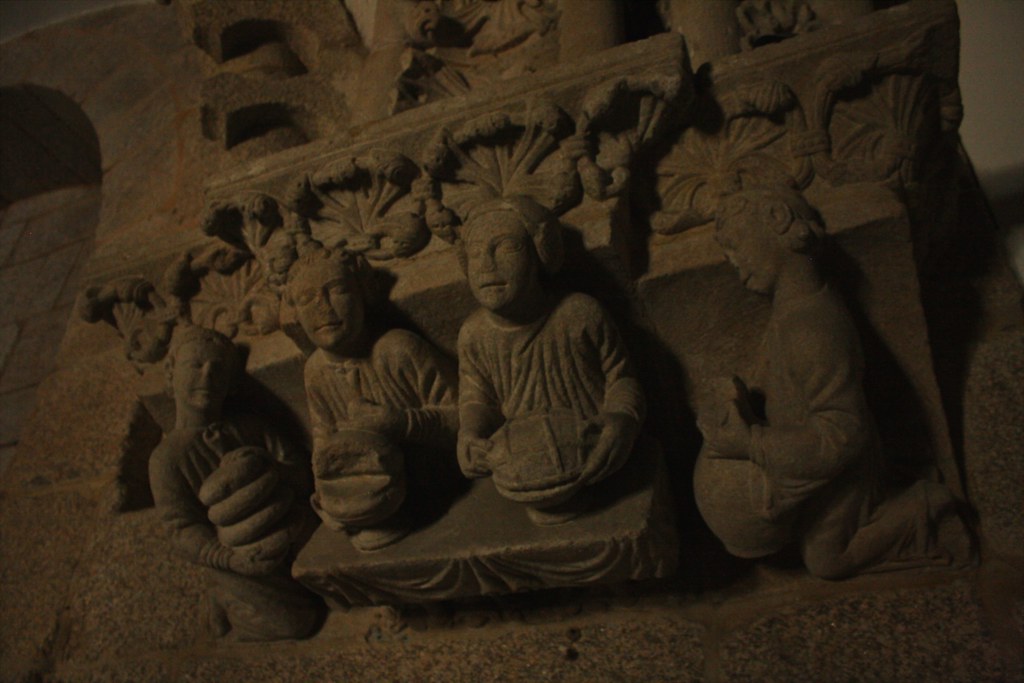Come to
Santiago de Compostela in rainy northwest Spain and you’ll inevitably be drawn to the city’s alluring, sprawling
cathedral. After all, as the supposed resting place of the Apostle St. James, the towering church draws hundreds of thousands of pilgrims every year who trek the
Camino de Santiago on foot. But another fascinating site hides in plain sight, leaning up against the cathedral’s walls in the monumental Obradoiro square: the
Pazo de Xelmírez. Although in the
Galician language the word
pazo historically refers to a nobleman’s luxurious country house, in this case it simply means “palace,” as it continues to function as the official residence of the archbishop of Santiago.
Diego Xelmírez, Santiago’s first archbishop, ordered the palace to be built during his episcopate in the early 1100s. It endures today as Spain’s finest example of the Romanesque style of architecture that isn’t a church or monastery. I assume the current archbishop and his offices are housed in rooms and halls out back, because nowadays, the original building from the Middle Ages has been cleaned up and converted into spaces for temporary exhibitions put on by the cathedral museum—giving museum-goers
a unique opportunity to explore a monument that was previously off-limits.
Last year, when I was living in Santiago, I stopped by the Pazo de Xelmírez every couple of months or so to check out rotating exhibits that showcased modern art or celebrated the 800th anniversary of St. Francis of Assisi’s pilgrimage to Santiago. I’ll be honest, the exhibitions themselves weren’t nearly as interesting to me as the palace they were housed in—I was actually more excited to check out medieval bedrooms, kitchens, and audience halls than the so-so art (#NerdAlert). This reminded me a lot of my experience at the
Guggenheim Museum in Bilbao: an astonishing place of flowing metal and glass, but whose contemporary art was ultimately underwhelming.
The real treasure of the palace has to be the upper-story refectory, complete with an ornately-designed ribbed vault ceiling. Used simply as a kitchen and dining hall, this expansive room guards some exquisite examples of medieval sculpture carved onto the corbels (the stone brackets that the vaults appear to spring out of). There’s the expected angels and floral designs, but there’s also troubadours signing and playing stringed instruments, as well as my personal favorite,
cooks and servants bearing so-very Galician empanadas in their arms, a round meat pie that Galicians continue to make to this day.
What was your favorite photo from this post? Have you been to museums where the venue itself was more interesting than the exhibit? Comment below in the discussion thread!








